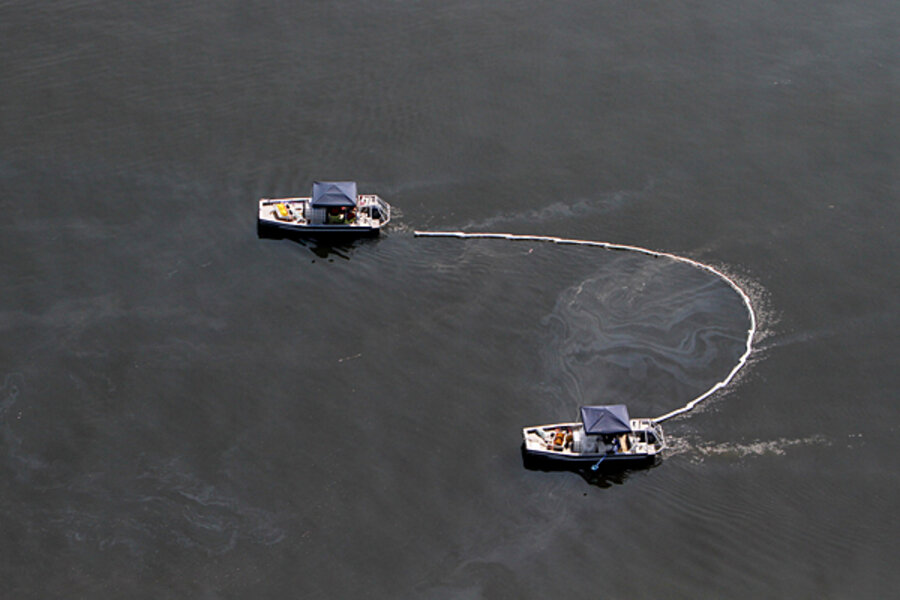Gulf oil spill: Two weekend operations could boost oil collection
Loading...
BP is counting on a forecast of calm sea winds in the Gulf of Mexico this weekend to launch two operations that it is hoped will double the amount of oil collected from the leaking gusher.
In one operation, a third vessel for oil collection – the Helix Producer – is set to connect to the blowout preventer’s kill line. In the other operation, robot vessels will remove the current containment cap, with the aim of installing a more effective cap in three or four days.
On Friday, weather for the Mississippi River Basin was reported by the National Weather Service to be “fair,” with tropical storms moving west into Texas.
IN PICTURES: The Gulf oil spill's impact on nature
“We’d like to take advantage of that,” Coast Guard Adm. Thad Allen told reporters Friday.
The two operations in the Gulf oil spill involve a delicate sequencing between a phalanx of remotely controlled robot and surface vessels. They are expected not only to reconfigure the volume of oil collected from the broken riser pipe, but also to ultimately decrease how much oil is escaping. The current containment cap is considered unstable because it is not fully bolted to the wellhead.
Doing both procedures at once involves several days of unattended leaking oil, although that will be mitigated, Allen says, by more oil being collected in the end. Also, doing both procedures at one time presents “no conflict,” he says.
Right now, two vessels – the Q4000, connected to the blowout preventer’s kill line, and the Discoverer Enterprise, connected to the riser pipe – are collecting about 25,000 barrels (about 1 million gallons) of oil per day. The Helix Producer is expected to increase collection capacity to about 53,000 barrels of oil per day – much closer to the estimated 60,000 barrels that could be escaping into the Gulf each day.
Depending on testing, the vessel will be operational sometime between Sunday and early Tuesday, Allen says.
In the other procedure, robot vessels will loosen the six bolts that are keeping the current cap in place in order to remove the cap entirely. Then, oil would flow freely from the riser pipe before the new cap could be installed.
The new cap is considered a tighter fit. It will be more securely bolted, Allen says, which would help move most of the oil to the surface, where it can be collected, skimmed, or burned.
But even with these efforts, stopping the flow of oil altogether is not expected to happen until mid-August. That’s when the first of two relief wells is expected to intersect with the original drill pipe three miles below the surface of the wellhead. Then, the idea is to pour drilling mud and concrete into the point of intervention, which is supposed to push the oil down and permanently plug the opening.
IN PICTURES: The Gulf oil spill's impact on nature
Related:





